(a) What is the electrical potential energy of a charge of $+1 \mathrm{C}$ placed at each of the points $\mathrm{A}$, $\mathrm{B}, \mathrm{C}, \mathrm{D}$ between the charged, parallel plates shown in Figure $22.15 ?$
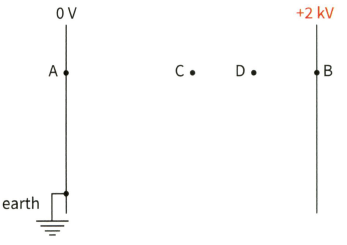


Important Questions on Coulomb's Law
(b) What would be the potential energy of $\mathrm{a}+2 \mathrm{C}$ charge at each of these points? (C is halfway between $\mathrm{A}$ and $\mathrm{B}, \mathrm{D}$ is halfway between $\mathrm{C}$ and B.)
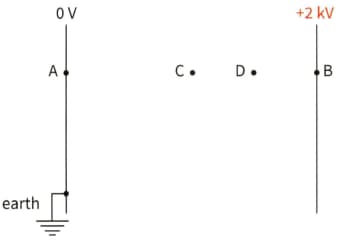
A Van de Graaff generator has a spherical dome of radius $10 \mathrm{~cm}$. It is charged up to a potential of $100000 \mathrm{~V}(100 \mathrm{kV}) .$ How much charge is stored on the dome? What is the potential at a distance of $20 \mathrm{~cm}$ from the dome?
How much work is done in moving $\mathrm{a}+1 \mathrm{C}$ charge along the following paths shown in Figure 22.16: from $\mathrm{E}$ to $\mathrm{H}$; from $\mathrm{E}$ to $\mathrm{F}$; from $\mathrm{F}$ to $\mathrm{G} ;$ from $\mathrm{H}$ to $\mathrm{E}$ ?
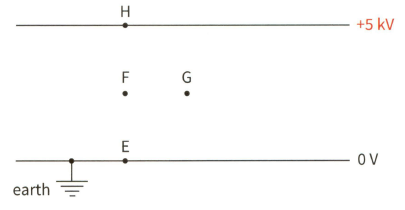
A uniform electric field.
How much work is done in moving $\mathrm{a}-1 \mathrm{C}$ charge along the following paths shown in Figure 22.16: from $\mathrm{E}$ to $\mathrm{H}$; from $\mathrm{E}$ to $\mathrm{F}$; from $\mathrm{F}$ to $\mathrm{G} ;$ from $\mathrm{H}$ to $\mathrm{E}$ ?
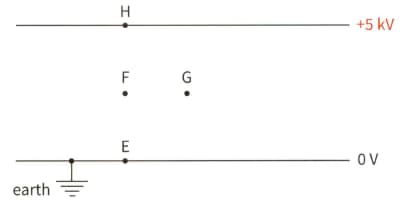
A uniform electric field.
How much work is done in moving $\mathrm{a}+2 \mathrm{C}$ charge along the following paths shown in Figure 22.16: from $\mathrm{E}$ to $\mathrm{H}$; from $\mathrm{E}$ to $\mathrm{F}$; from $\mathrm{F}$ to $\mathrm{G} ;$ from $\mathrm{H}$ to $\mathrm{E}$ ?
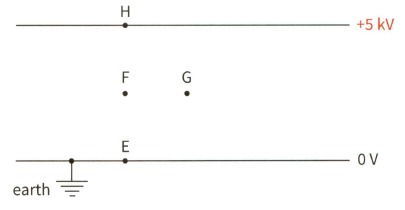
A uniform electric field.
We showed that in the atomic nuclei the electric force is much larger than the gravitational force . Is this also true in the formation of atoms? Yet, in the formation of stars and planetary systems, the gravitational force rules.
Discus and explain why there is this difference.
How does the potential $V$ change with the distance $r$ from a point charge?
(a)
(b)
(c)
(d)
